Fish Species and Seasons in Coiba
Find the best seasons / months for a fishing charter. Find your favorite fish: Amberjack, Black Marlin, Blue Marlin, Dorado Grouper, Rooster Fish, Pacific Sailfish, Cubera Snapper, Yellow Fin Tuna and Wahoo.
Seasons and months
| Coiba | Jan | Feb | Mar | Apr | May | Jun | Jul | Aug | Sep | Oct | Nov | Dec |
|---|---|---|---|---|---|---|---|---|---|---|---|---|
| Amberjack | ||||||||||||
| Black Marlin | ||||||||||||
| Blue Marlin | ||||||||||||
| Dorado | ||||||||||||
| Grouper | ||||||||||||
| Rooster Fish | ||||||||||||
| Pacific Sailfish | ||||||||||||
| Cubera Snapper | ||||||||||||
| Yellow Fin Tuna | ||||||||||||
| Wahoo |
Fishing Species
Black marlin
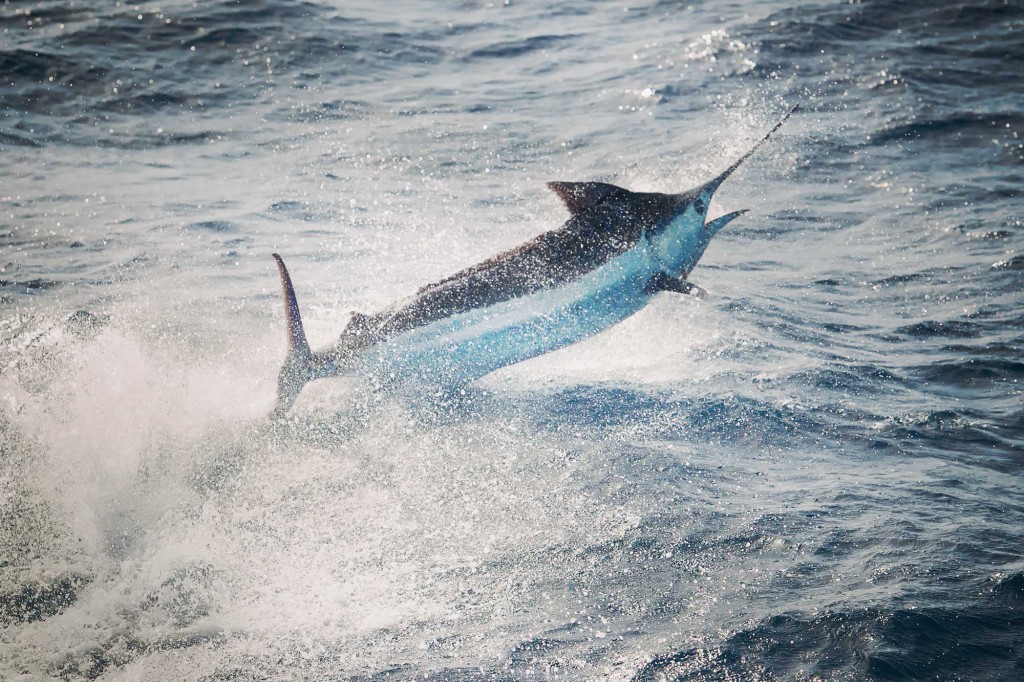
In Coiba, you can find this incredible species between the months of December to April.
This fish has a characteristic sword or beak that it presents on its face which it uses to corner its prey.
The black Marlin, unlike the other Marlins, has a dorsal fin on its head and another very close to its tail.
His body is adapted at high speeds, making its sport fishing even more interesting.
It’s color when alive is very intense and dark blue. Its fin can become purple.
Once dead the fish changes color and its skin turns black, hence its name Marlin Black.
They live in tropical waters and are distributed along the Pacific Ocean to the Indian Ocean.
The fish preferred by royalty when it comes to sport fishing.
Coiba is an excellent place for fishing since its favorite places to live are the coasts, the reefs and the surface of the ocean.
They have a great view, which allows them to marry through it.
We recommend you use specific baits for this fish and thus get your attention visually.
Its flavor is delicious since its meat is red and very firm for cooking.
The largest specimen that has been able to fish and register is 4.70 meters and 740 kg.
They love sardines and small tunas, however, they also eat crustaceans and small squid.
Blue marlin
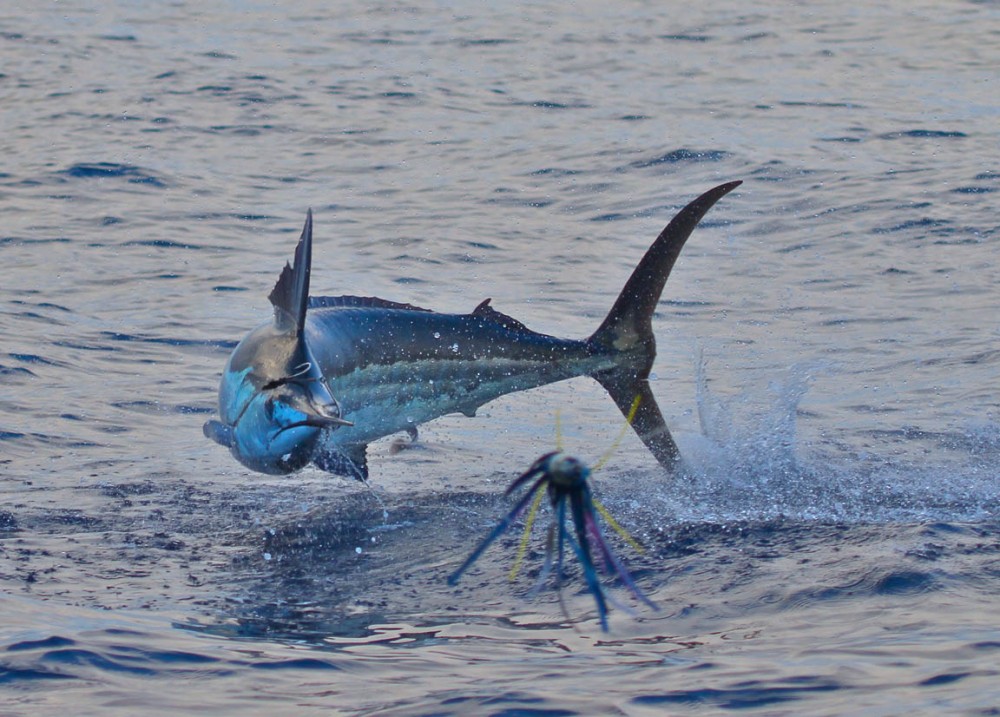
In Coiba, you can find this beautiful species in the months of December to April as well as its close friend the Black Marlin.
The blue Marlin is a large fish with facial characteristics very similar to those of its species.
The blue marlin maintains its pointed sword in the fact that together with its incredible and desired speed, it manages to defend himself against all the threats that may appear in its path.
The Blue Marlin has a dark blue back and a silver and white belly.
One of the main characteristics of blue marlin is that females exceed 450 kg while males do not usually exceed 160 kg
They have a flat dorsal fin, black or dark blue and the other fins, dark brown nuanced with a silver-white.
They feed mainly on fish, in addition to catching octopus and squid.
Keep in mind at the time of fishing that these animals like to feed during the day.
Here we can find them in the banks near the surface of Coiba or looking for food in the depths.
It is a solitary and aggressive species, so if you manage to capture one of these, you will be taking one of the biggest trophies that the ocean has for you.
Dorado

Commonly called mahi-mahi or dolphinfish!
You can find this beautiful and shining species on Coiba Island between the months of January to April.
Keep in mind that in the morning and afternoon are good fishing hours for these animals.
Its distribution is found in the Caribbean Sea and the Atlantic, Indian and Pacific oceans.
This species is one of the most popular fish for fishing.
This species a formidable fight at the time of its capture, combining it with strong jolts and great jumps.
Dorados are a very strong fish, it can weigh more than 40 kg and measure up to 1.5 meters.
Its main characteristic in addition to its flavor and its beautiful intense golden color is its compressed head and dorsal fins that run the entire length.
This information is important that you know! Goldfish are NOT in danger of extinction since their reproduction is quite fast, which has increased considerably in the ocean, becoming a primary source of food for other species including humans.
Sportfishing for dorado is unique, so far no other fish is known that offers the same fight as do dorado.
This fish offers a constant fight between the fisherman and the prey.
This fight usually lasts many minutes, offering a large dose of adrenaline and tension, which makes it more interesting.
Grouper
This species of largemouth and prominent lips is usually achieved on the coast of Coiba throughout the months of the year.
For a long time, the grouper has been one of the most sought after species by fishermen, due to its large size and delicious flavor, however, this species is protected. Only sport fishing is allowed.
Its favorite food is octopus, squid and some other species of fish and mollusks.
You can get it in the rocky areas of the Coiba Sea about 10 or 50 meters deep, mainly where there are a large number of holes or caves where they can hide.
Something very peculiar about this species is that the female can become a male when she reaches sexual maturity.
This occurs as a species protection method.
When a male of the family dies, large females feel the responsibility of taking command and ensuring their reproduction as a species.
The Mero can measure up to 1.5 meters in length and can weigh up to 60 kg
This beautiful marine animal has the lower jaw somewhat extended and its body is flattened and elongated.
The Mero has a dark color, between Brown and olive green, with white spots. Their color varies depending on the season of the year or how old they are.
The dorsal fin is bordered by a beautiful orange color, the other fins have a light blue color and at the bottom of the animal, we can notice an intense yellow that covers all that space.
It should be noted that these animals can last up to 50 years.
The grouper is distinguished from other similar species by its rounded caudal fin.
RoosterFish
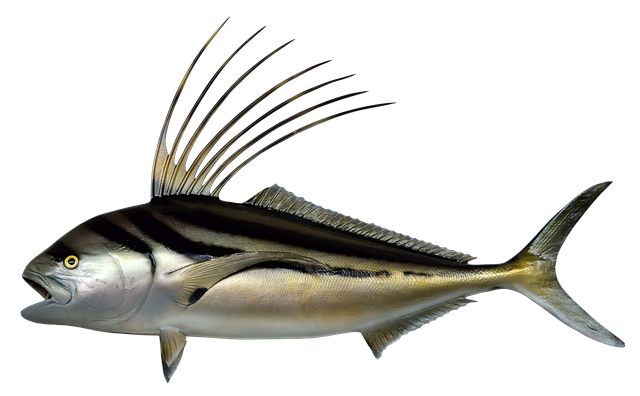
Majestic fish that we can get on the island of Coiba in every month of the year.
A VERY IMPORTANT NOTE of this fish is that it is strongly recommended to catch and release.
It is a popular sport fish in tropical waters, but it is not considered a good table fish because of its taste.
The weight of the average hooked fish can weigh up to 9 kg and measure up to 1.6 meters long.
Its main feature and what makes it so desired is its dorsal fin, which is long and consists of 7 long spines resting in a groove.
Papagallo fish has a head that is longer than wide.
It has a bluish-gray color with silver highlights
The Papagallo fish in Coiba can be caught with a good artificial lure Rapala Magnum type, or with a live bait type bait, from our yachts at a speed of approximately 4 knots.
Sailfish
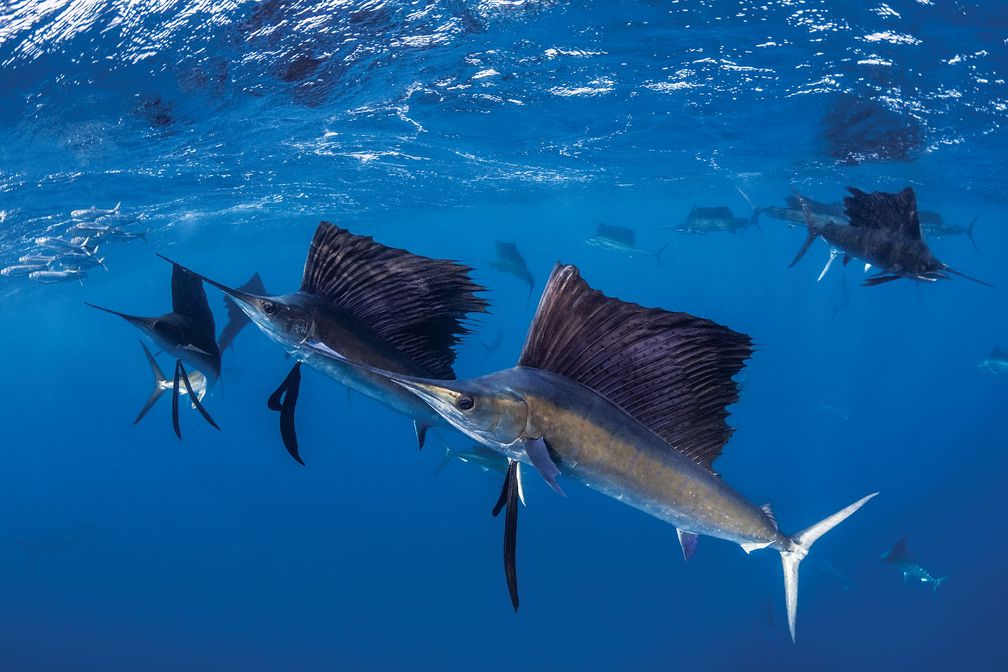
We can get this beautiful specimen on the Island of Coiba between the months of March to June.
The Sailfish, family of the marlines, is one of the fastest in the ocean when speaking over short distances.
It is able to reach 110 km per hour because the anatomy of its body is hydrodynamic and muscular.
Coveted fishing trophy that weighs up to 60 kg.
Its main jaw extends into a delicate and thin spine.
It has a long dorsal fin, in the form of a sail, which allows it to cut water from the surface and reach high speeds.
Its color is dark blue, with brown splashes, and in its belly, we get a silvery-white color.
The most common size for sailfish is 2.40 cm long.
Sailfish is a lover of coasts and reefs.
For its fishing, light fishing equipment is recommended in height, since this fish presents a fight for its capture only in the first moments of the same.
This fish looks better in the sea than on the table.
Cubera Snapper
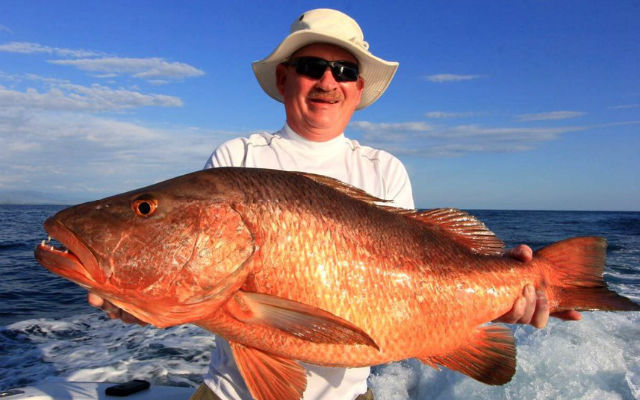
This species of snapper is present in Coiba every month of the year.
In the tropical zone, it is one of the main fishing resources.
Its flavor is delicious, ideal for cooking on the grill or in stews.
Its body is longer than wide, its head is triangular and its lower jaw is usually prominent.
The Cubera Snapper, carnivorous fish, that feed on a large number of species of the sea, however of their favorites are crustaceans and other smaller fish.
They are easy to get fish in mangroves and hard seabed.
This species can reach 160 cm in length and weigh approximately 57 kg.
Yellowfin tuna
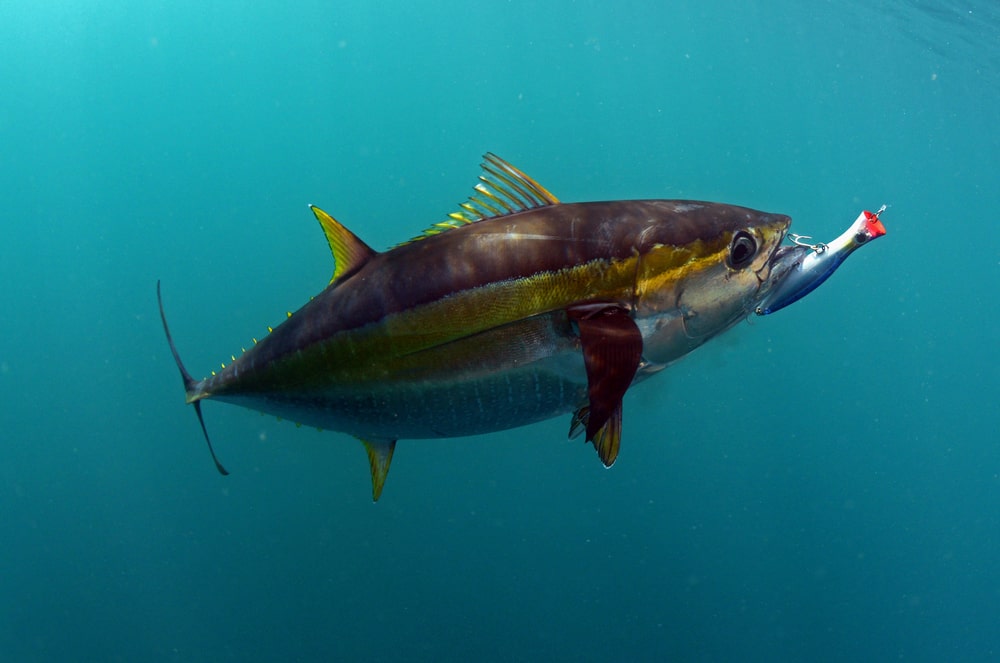
This tuna appears around the island of Coiba in the months of December, February, March and June.
Yellowfin tuna is a fish with anatomical features designed to be one of the best swimmers in the ocean.
Large head and small mouth compared to its skull.
This specimen has a dark blue color and a belly that goes from white to silver, with a dorsal fin in yellowish tones.
Its body is chubby, it can weigh 400 kg and 900 kg and its length ranges between 3 and 8 meters long.
It responds to several types of lures but its favorite is the one he knows as Cedar Plug (Egyptian origin)
Once hooked to the lure, he is an excellent fighter, he will show you all its strength and endurance for long hours.
Guaju (Wahoo)
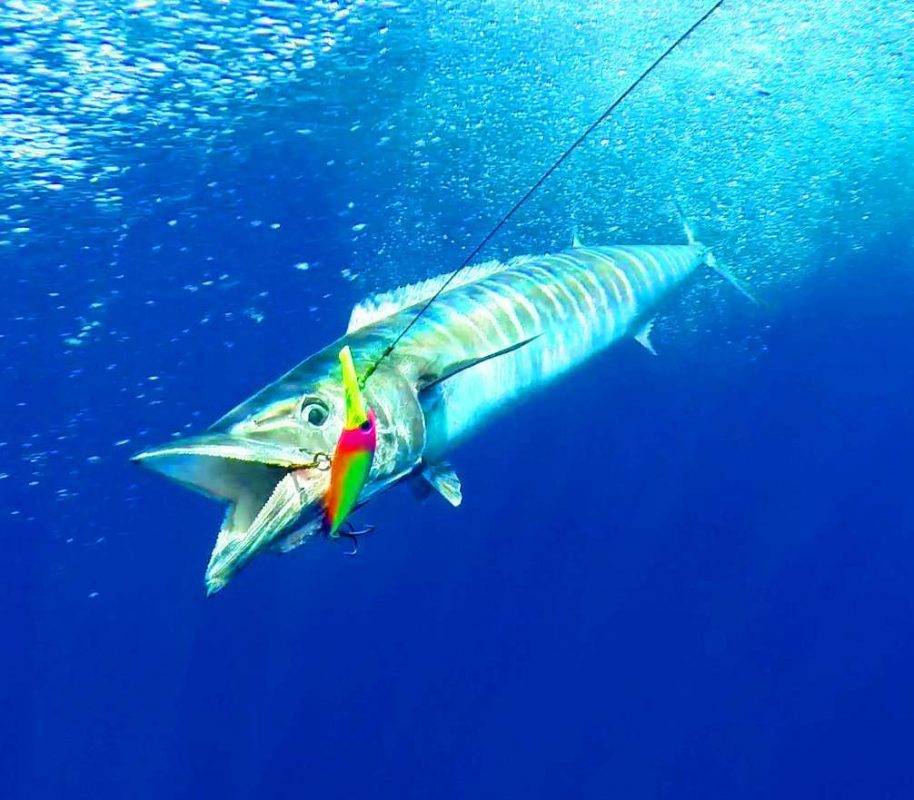
Peto Peto or Sierra fish, we can easily get it on the island of Coiba in the months of September, October and November.
The Wahoo Fish is elongated and slender, with a sharp head and a tail divided in two.
It is dark bright blue.
The main feature of this fish is its upper jaw, which is mobile and has in total in its two jaws with 64 teeth distributed mostly in its lower jaw.
The largest registered size so far has been 2.5 meters and its weight is 72 kg
Wahoo Fish feeds on other smaller fish, crustaceans and squid.
They can be obtained alone or in the company of 4 to 6 more.
This Fish is called the bullet of the fish, for being one of the fastest in the ocean.
This fish can be caught in several ways, but the main one is the trolley and at a speed of 6 to 8 knots.
Amber or Amberjack fish
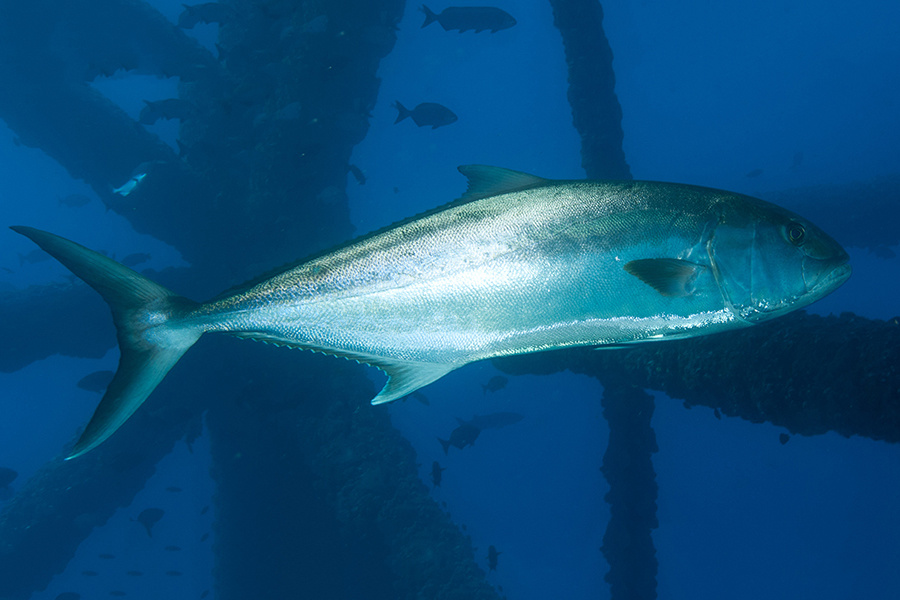
This species is present on the island of Coiba every month of the year.
This fish is ideal for consumption, due to the delicious taste of its meat, which lends itself to any type of cooking and seasoning.
Its attraction for sport fishing is the fight that this fish presents at the time of its capture.
They are distributed throughout the planet earth in waters with temperatures of 19 to 26 degrees Celsius.
The Amber Fish can measure up to almost 2 meters in length and weigh up to 80 kg.
It is usually green-gray with olive tones and the occasional yellow stripe.
Currently, metal jigs are widely used for fishing and it is recommended to use strong and resistant equipment for this species.